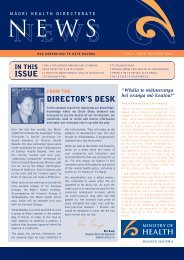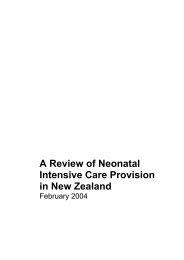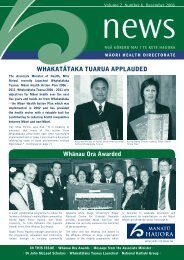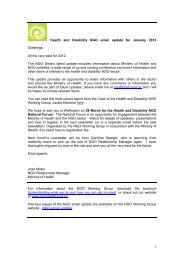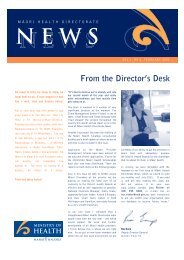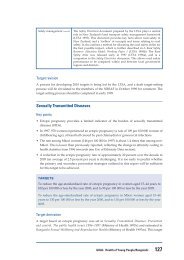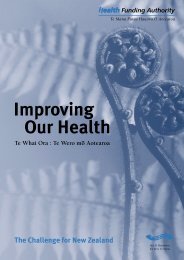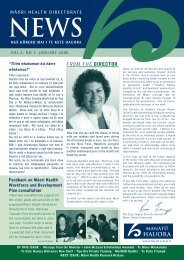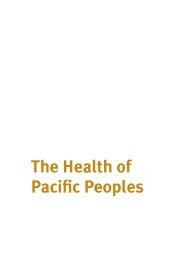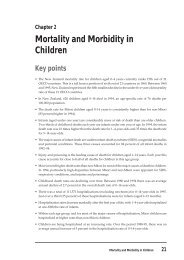breastscreen aotearoa an independent review - Ministry of Health
breastscreen aotearoa an independent review - Ministry of Health
breastscreen aotearoa an independent review - Ministry of Health
You also want an ePaper? Increase the reach of your titles
YUMPU automatically turns print PDFs into web optimized ePapers that Google loves.
I SUMMARYSUMMARY AND RECOMMENDATIONSOn the basis <strong>of</strong> the conclusion <strong>of</strong> a recent World <strong>Health</strong> Org<strong>an</strong>isation expert <strong>review</strong> <strong>of</strong> theevidence, a breast screening service is justified in a country such as New Zeal<strong>an</strong>d with ahigh mortality from breast c<strong>an</strong>cer. Despite a number <strong>of</strong> factors that make the org<strong>an</strong>isation<strong>an</strong>d administration <strong>of</strong> efficient public health screening programmes difficult in NewZeal<strong>an</strong>d, BreastScreen Aotearoa, (BSA), is developing into a coherent well-monitorednational service.The quality <strong>of</strong> the screening process is high <strong>an</strong>d it is provided in a consistent way across allLead Providers that is likely to maximise the benefit <strong>an</strong>d minimise the harm. The systemsin place to safeguard against poor perform<strong>an</strong>ce are comprehensive, <strong>an</strong>d, although it is neverpossible to guar<strong>an</strong>tee 100% "safety", the d<strong>an</strong>ger <strong>of</strong> <strong>an</strong> incident comparable to earlierscreening failures in New Zeal<strong>an</strong>d is remote.The principal constraint on BreastScreen Aotearoa as a whole is the lack <strong>of</strong> a nationalpopulation register <strong>an</strong>d public health information system. As a result the proportion <strong>of</strong>eligible women who are participating in the programme is unknown, although estimatesbased on census data suggest that it is still well below the 70% needed to achieve a 30%reduction in the number <strong>of</strong> breast c<strong>an</strong>cer deaths.The present system for recording details <strong>of</strong> the pathology <strong>an</strong>d treatment <strong>of</strong> screen-detectedc<strong>an</strong>cers is inadequate, <strong>an</strong>d this has so far prevented <strong>an</strong> assessment <strong>of</strong> how well the screeningprogramme is progressing towards its target <strong>of</strong> reducing deaths. This difficulty c<strong>an</strong> beeasily resolved with the co-operation <strong>of</strong> pathologists <strong>an</strong>d surgeons in BSA.Although all categories <strong>of</strong> staff working in m<strong>an</strong>y different aspects <strong>of</strong> BSA are obviouslydedicated to their work, there is opportunity for more communication between the LeadProviders, the Independent Monitoring Group <strong>an</strong>d the National Screening Unit, toemphasise the fact that this is a national service <strong>an</strong>d all are working towards the same aim.Although economic aspects <strong>of</strong> BSA were not included in this <strong>review</strong>, it appears to beexpensive in its use <strong>of</strong> health service resources, not least because <strong>of</strong> the numeroussafeguards to ensure its excellence. The number <strong>of</strong> lives which it is <strong>an</strong>ticipated c<strong>an</strong> besaved is not great <strong>an</strong>d therefore it will be import<strong>an</strong>t in the future to keep cost-benefitconsiderations under <strong>review</strong>.3



